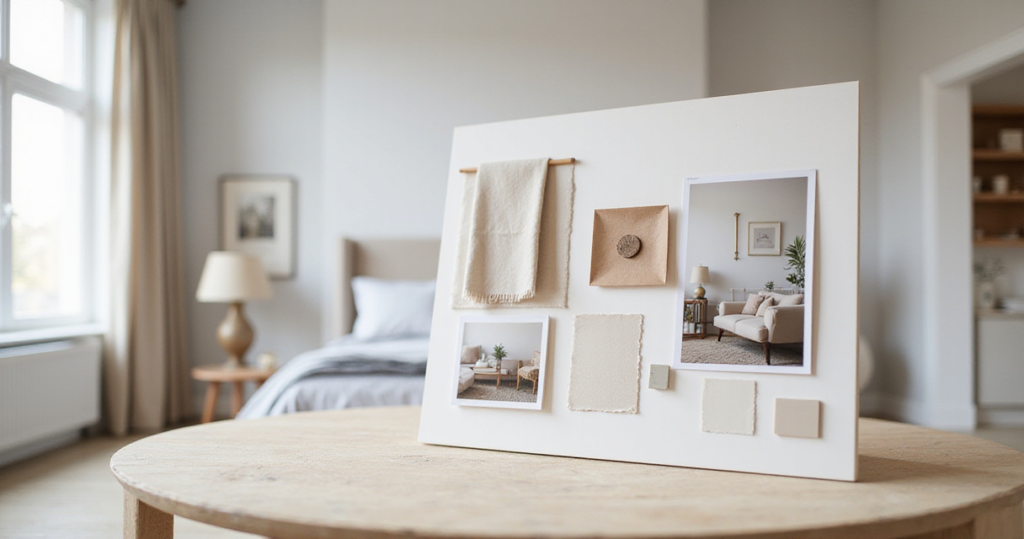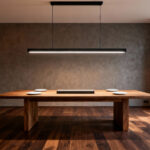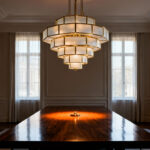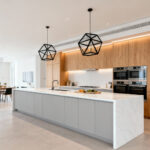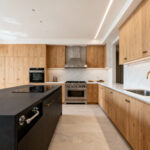Can we talk about why everyone gets their master bedroom wrong? Seriously. It’s the first and last room you see every day, yet most of them look like a storage unit for laundry baskets and half-finished projects. We call it a “sanctuary,” but treat it like an afterthought. That’s a huge mistake. This room isn’t just where you sleep; it’s your personal charging station. If the charging station is cluttered, chaotic, and stressful, how do you expect to feel recharged and ready to connect with people?
Look, your bedroom is the command center for your well-being. A great one helps you unplug, rest deeply, and wake up ready to be your best self—for your family, your friends, and your career. And creating that space isn’t about spending a fortune or having some mystical design sense. It’s about making a few smart, intentional choices that blend tech, comfort, and your personal style. So forget the corporate speak and the fluff. Here’s what actually matters.
Laying the Groundwork: Strategic Planning for Your Master Bedroom Oasis (Part 1)
Before you even think about paint colors or pillows, you need a plan. Most people skip this part and end up with a room that’s a collection of “stuff they liked on Instagram,” but doesn’t actually work. This is the boring-but-critical part that saves you money, time, and a ton of headaches later. Get these four things right, and everything else falls into place.
1. Defining Your Personal Aesthetic: Crafting a Cohesive Vision
Forget “mood boards.” That whole process can feel like homework. Here’s the shortcut: what’s the vibe of your favorite hotel? The quiet boutique spot? The airy beach resort? That’s the feeling you’re after. The BS everyone falls for is trying to replicate a single hyper-trendy photo. Don’t do that. Your space needs to feel like you, not a catalog. Your aesthetic is already in your life, you just have to look for it.
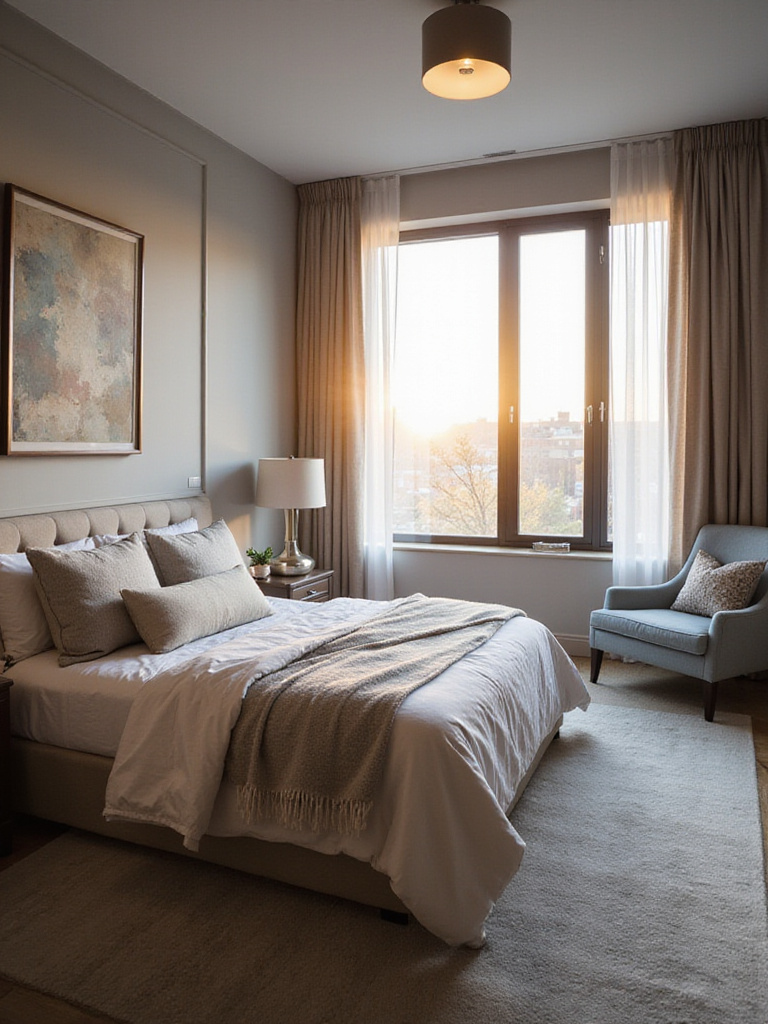
The real secret is to look at your clothes. Is your closet full of neutral linens or bright, structured pieces? That’s your color palette and style right there. It’s what you’re naturally drawn to. Your bedroom should feel like your most comfortable, confident outfit. That’s how you create a space that actually resonates and helps you unwind, instead of one that just looks cool for a week until the next trend hits.
Now that you know the feeling you want, let’s make sure you don’t trip over the dresser every morning trying to get to the closet.
2. Maximizing Your Layout: Space Planning for Flow and Functionality
You know what kills a relaxing vibe instantly? Stubbing your toe in the middle of the night. Proper layout isn’t some fancy design term; it’s about making sure you can move around easily without getting bruised. You need clear, intuitive pathways. Most people just push all the furniture against the walls and call it a day, but that almost never works.
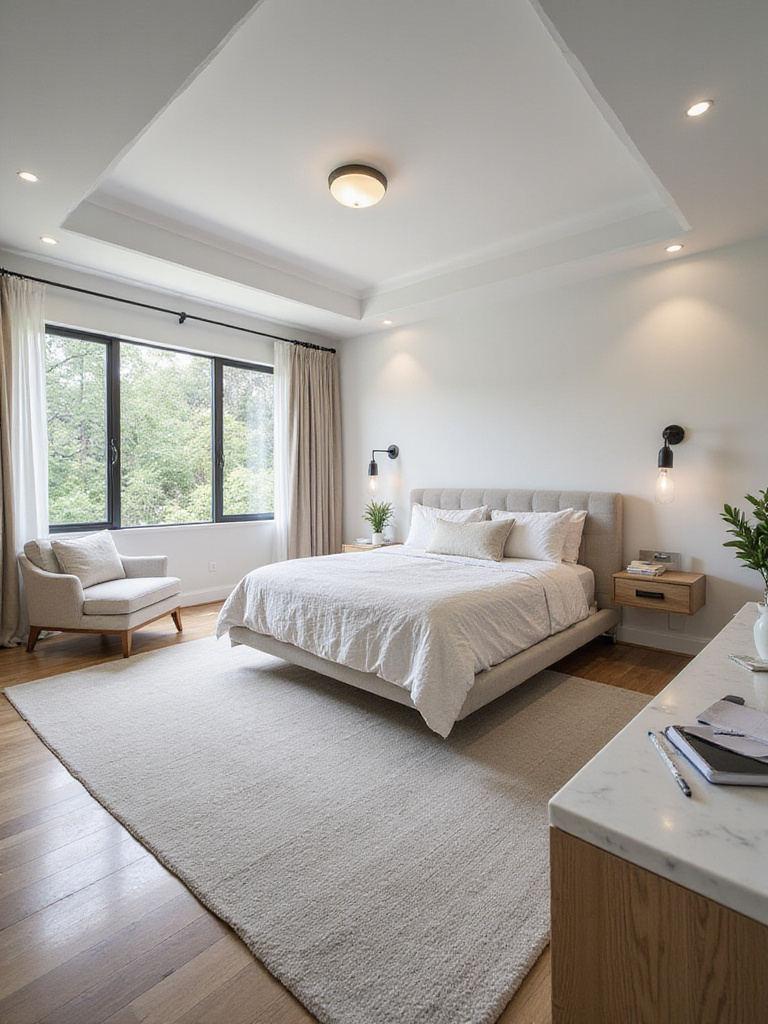
Here’s the only rule you need to remember: aim for about three feet of clearance for major walkways, like from the door to the bed and to the closet. For smaller paths, like around the foot of the bed, you can get away with a little less, maybe 24 inches. The ultimate shortcut? Before you move a single heavy thing, use blue painter’s tape to mark the footprint of your furniture on the floor. You’ll see instantly if that king-size bed is going to turn your room into an obstacle course.
Okay, you’ve got a floor plan that works. Let’s talk money, because this is where good intentions often fall apart.
3. Mastering Your Budget: Allocating Funds for Key Investments
Everyone obsesses over the total budget number, but that’s the wrong way to think about it. The real game is in allocation—knowing where to spend and where to cheap out. You don’t need a massive budget to create a luxe space, you just need to be strategic. The most common mistake is spreading your money evenly across everything, resulting in a room full of mediocre stuff.
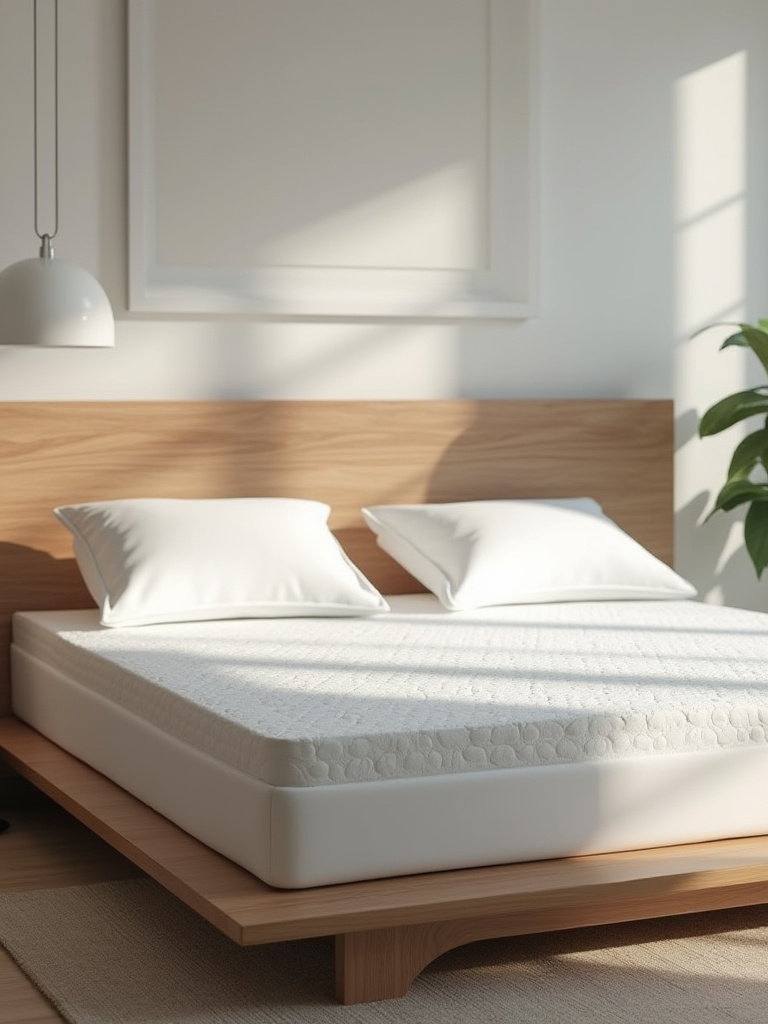
Here’s the “spend where it matters” approach I give all my clients: Pour your money into the things you touch every single day. That means the mattress is your #1 investment, followed by high-quality bedding and great lighting. Those are non-negotiable for your well-being. Where do you save? On things that are easy to swap out. A stylish side table from a thrift store, inexpensive art prints, or a simple rug can look amazing without breaking the bank. Don’t blow your budget on a trendy dresser you can find for half the price on Facebook Marketplace.
You’ve set a smart budget, now let’s light this place up. Properly.
4. Illumination Essentials: Strategic Natural and Artificial Lighting Planning
As an AV guy, this is my biggest pet peeve. People will spend thousands on a bed and then light the whole room with a single, harsh overhead light. It’s a crime against design! Good lighting is everything. It sets the mood, helps you see, and can even improve your sleep. The goal is to layer your lighting, just like you layer your bedding. You need different light for different moments: reading, getting ready, or winding down.
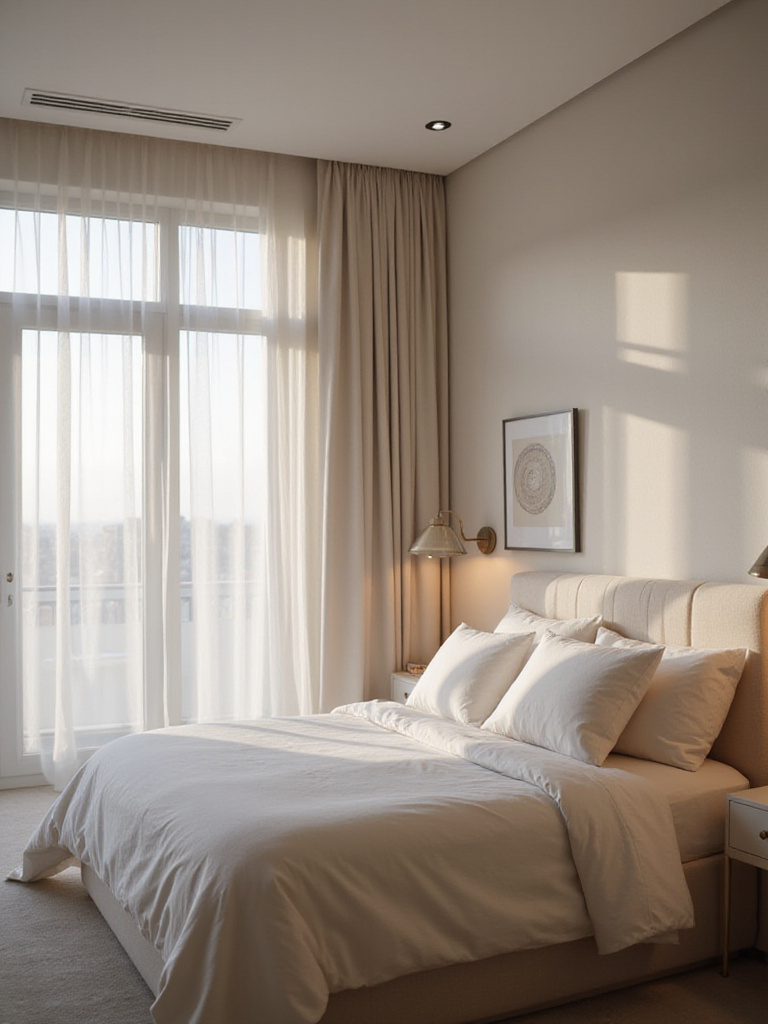
This is simple to fix. First, every single light in your bedroom should be on a dimmer switch. It’s a cheap upgrade and a total game-changer. Second, get smart bulbs that offer “tunable white” light. This lets you change the color temperature from a cool, energizing blue-white light in the morning (to help you wake up) to a warm, soft amber glow at night (which signals your brain it’s time for sleep). It’s the single best tech investment you can make for your sleep hygiene, and it’s surprisingly affordable.
Laying the Groundwork: Strategic Planning for Your Master Bedroom Oasis (Part 2)
We’re almost done with the foundational stuff. There’s just one more crucial, and often overlooked, element we need to tackle. It’s something you can’t see, but you can definitely feel (and hear) when it’s wrong.
5. Soundproofing Solutions: Creating a Tranquil and Restful Environment
Think soundproofing is just for home theaters and recording studios? Wrong. It’s for anyone who lives with other humans, pets, or near a street with cars on it. A quiet room is fundamental for deep, restorative sleep, but most people just assume they have to live with noise. You absolutely don’t. And the best part is, you don’t need to rip open your walls to get it done.
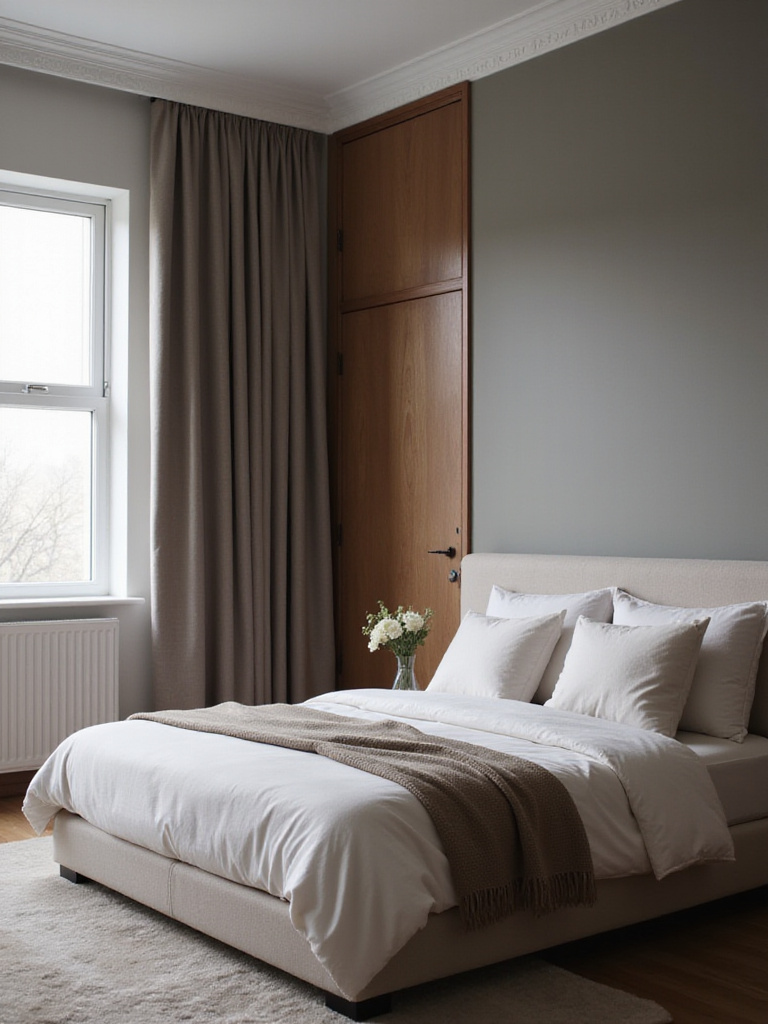
You can achieve about 80% of the benefit with two simple, low-cost upgrades. First, swap out your hollow-core bedroom door for a solid-core one. It’s a weekend project that makes a shocking difference in blocking out household noise. Second, hang heavy, thick curtains. Not only do they block light, but they also absorb a ton of sound from outside. Add a plush rug, and you’ve created a quiet, cozy cocoon without calling a single contractor.
Building Blocks of Comfort: Essential Selections and Setup for Serene Living (Part 1)
Alright, the groundwork is laid. Now for the fun part—picking the stuff that actually goes in the room. This is where we build the layers of comfort that turn a simple bedroom into a five-star retreat you never want to leave. Let’s start with the most important decision you’ll make.
6. The Ultimate Sleep Sanctuary: Selecting Your Ideal Mattress and Bed Frame
I’m just going to say it: your mattress is a piece of healthcare equipment. It is not furniture. It directly impacts your physical health, your mood, and your energy levels. People will spend more on a phone they replace in two years than on the mattress they use for eight hours a night for a decade. This is insane. Don’t be one of those people. A great mattress supports your spine, relieves pressure, and lets you wake up without pain.
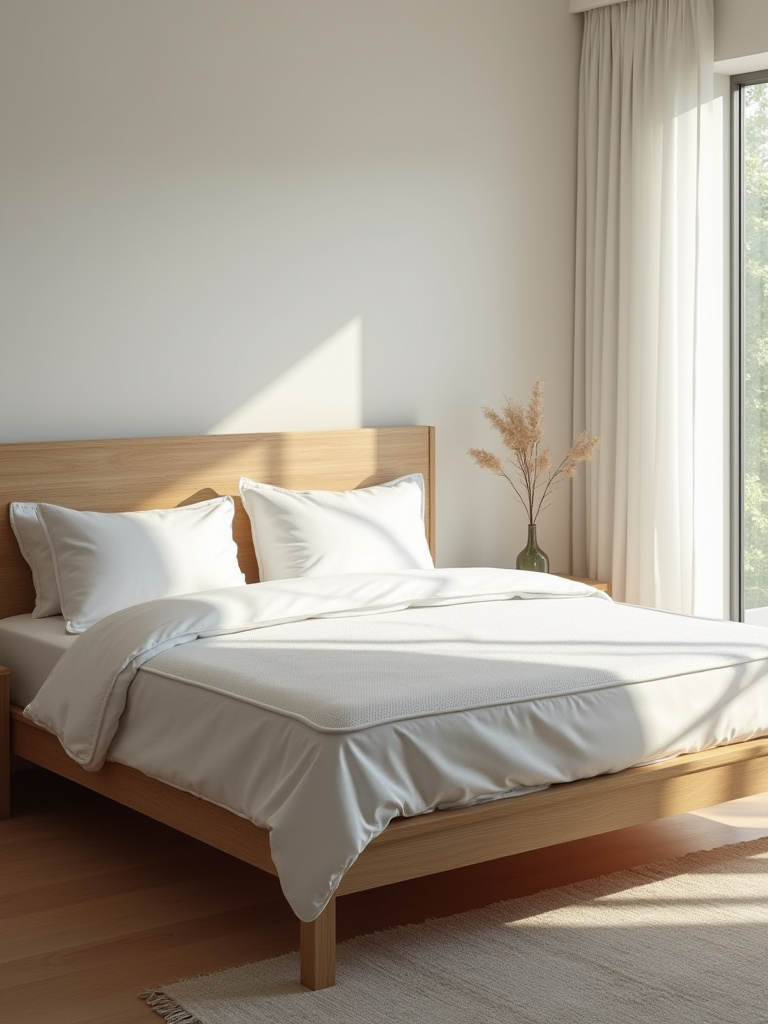
When you’re testing mattresses, lie down for at least 15 minutes in your actual sleeping position. Just sitting on the edge tells you nothing. And the frame? It has two jobs: support the mattress properly and be quiet. That’s it. A wobbly, squeaky bed frame will sabotage even the most expensive mattress. Get a solid platform frame or a sturdy base that doesn’t make a sound when you move. That’s a true luxury.
With the foundation of your bed sorted, let’s paint the scene with the right colors.
7. Harmonious Color Palettes: Painting Your Path to Tranquility
People get so paralyzed by choosing paint colors. There are literally millions of them. The BS is thinking you need to follow some complex color theory. You don’t. All you need is a color that makes you feel calm. That’s it. This is your private space, not a public gallery.
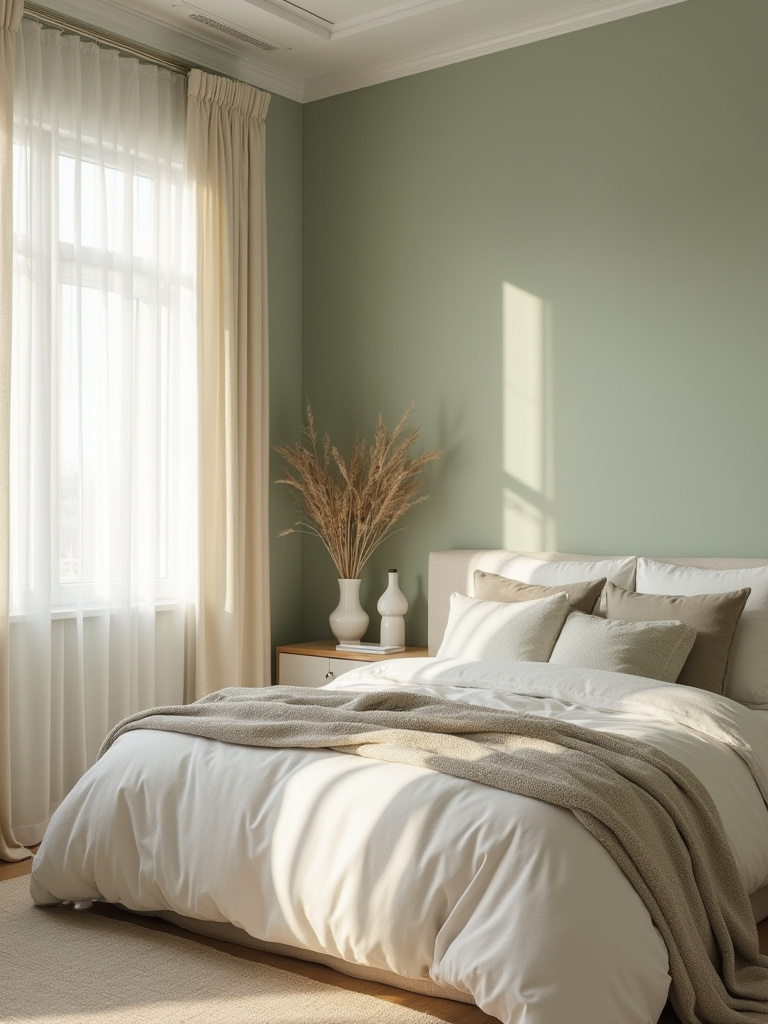
Here are two dead-simple ways to pick a palette. One: find a piece of art or a rug you absolutely love and pull the colors directly from it. The work has already been done for you. Two: go with muted, earthy tones—think soft greens, calming blues, and warm greys. These colors are scientifically proven to be relaxing. Get some paint samples, slap them on the wall, and see how they look in the morning and at night. Pick the one that makes you exhale. It’s that simple.
Now that the room has a calming color, we need to eliminate the number one enemy of calm: clutter.
8. Smart Storage Solutions: Decluttering for Visual Calmness
A messy room is a stressful room. Your brain sees clutter as unfinished business, which is the exact opposite of what you want when you’re trying to sleep. “Smart storage” is just a fancy term for giving everything a home that is out of sight. The goal here is to create visual silence.
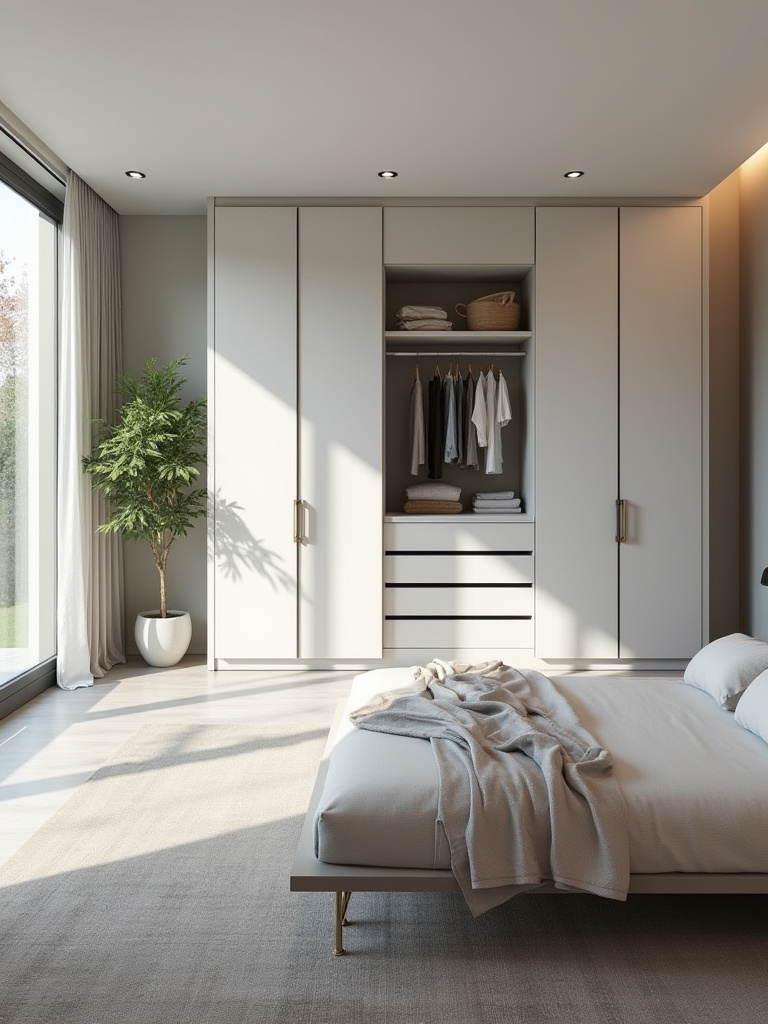
Get a bed frame with built-in drawers. Use the space under your bed—it’s prime real estate. Find an ottoman that doubles as a storage chest. Vertical space is your best friend, so think about tall, narrow bookshelves instead of a wide, clunky dresser. A word of warning: do not buy a single storage container until after you’ve decluttered. Otherwise, you’re just organizing junk you don’t need. Get rid of the stuff first, then build a home for what’s left.
We’ve hidden the clutter. Now let’s manage the biggest feature of the room: the windows.
9. Curtain and Blind Innovations: Managing Light and Privacy with Elegance
Your window treatments have two critical jobs: blocking light and giving you privacy. Anything else is a bonus. The single biggest mistake I see is flimsy curtains that let light bleed in around the edges, waking you up at 5 a.m. Your bedroom should be a cave when you want it to be. Invest in high-quality blackout curtains or blinds. It’s a non-negotiable for good sleep.
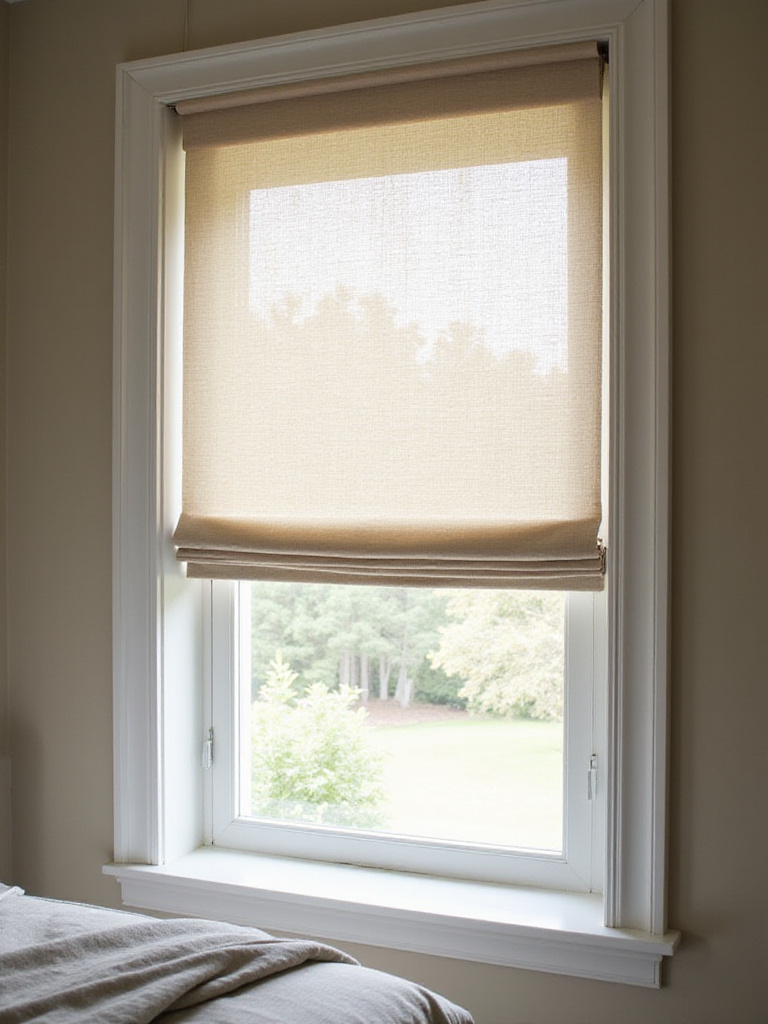
Want to level up? Get smart blinds. This is one of my favorite pieces of “invisible tech.” You can program them to open slowly a few minutes before your alarm, gently waking you up with natural light instead of a jarring noise. A “Goodnight” voice command can close them all at once. It feels incredibly futuristic and luxurious, but it’s really about building effortless routines that cue your body for rest and wakefulness.
Building Blocks of Comfort: Essential Selections and Setup for Serene Living (Part 2)
We’ve covered the big stuff. Now let’s drill down into the details that pull the whole room together. These are the elements that affect how the room feels under your feet, how you move through it, and how seamlessly it works with your lifestyle.
10. Flooring for Function and Feel: Enhancing Comfort Underfoot
You can have the best bed in the world, but if your first step in the morning is onto an icy, hard floor, it’s a rough start to the day. The feel of your bedroom flooring matters. You want something soft, warm, and quiet underfoot. This is not the place for slick, cold tile.
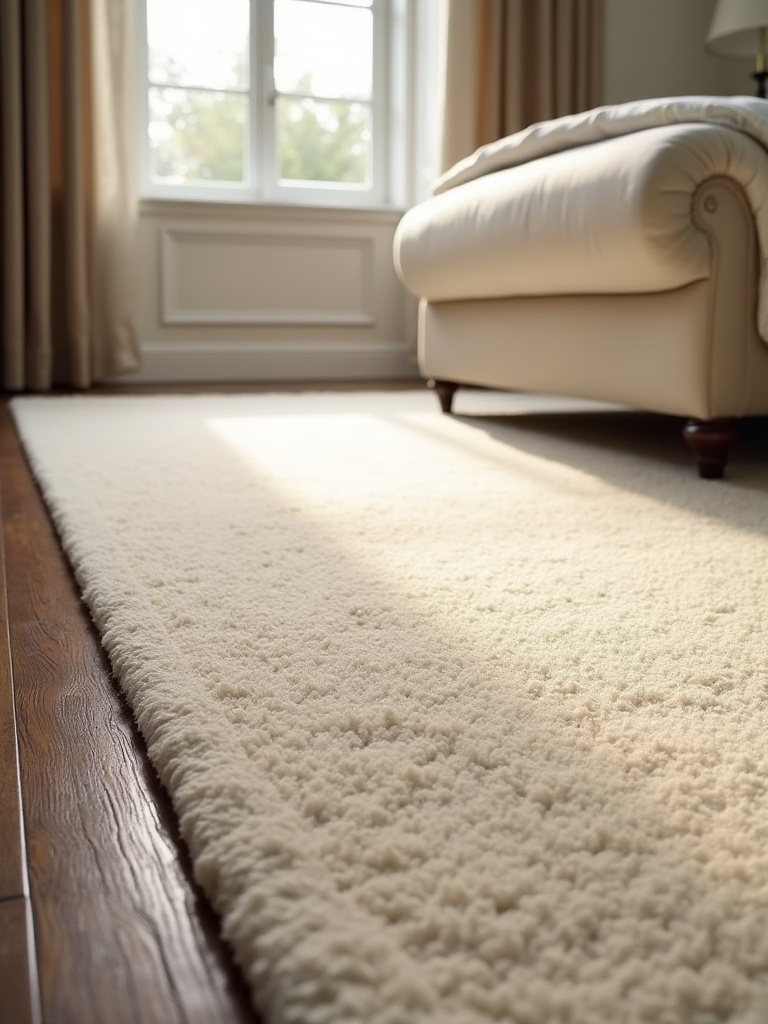
For maximum comfort, wall-to-wall carpet is still the king. It absorbs sound beautifully and feels cozy. If you have hardwood floors (or want them), you absolutely must get a large area rug. Here’s the rule: the rug needs to be big enough that your feet land on it when you swing your legs out of either side of the bed. A tiny rug that just sits at the foot of the bed looks awkward and cheap. Go big here—it anchors the entire room and adds a huge layer of warmth and comfort.
With soft footing established, let’s think about how everything is arranged in the space.
11. Thoughtful Furniture Placement: Optimizing Walkways and Views
Don’t just shove your bed against the first available wall. Think about the view from your bed. What do you want to be the first thing you see when you open your eyes? A window with a beautiful view? A stunning piece of art? Don’t let it be a pile of clothes on a chair. Position your bed so it has the best possible sightline.
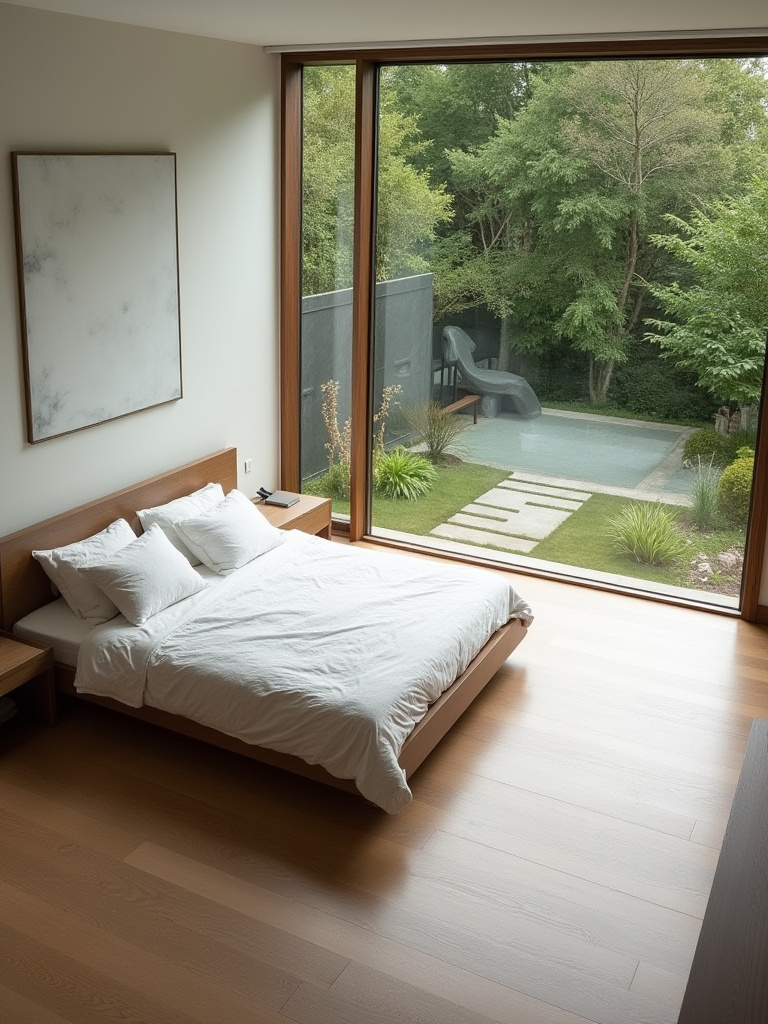
And give your furniture room to breathe. The “floating” layout, where the bed and other pieces aren’t pushed right up against the walls, can make a room feel way bigger and more luxurious. It creates a sense of airiness and intention. As long as you stick to that “three-foot rule” for walkways we talked about earlier, you’ll create a layout that feels both spacious and functional.
Now, let’s connect all this comfort to some serious convenience with smart home tech.
12. Smart Home Integration: Automating Comfort and Convenience
Smart home tech in the bedroom isn’t about being lazy. It’s about building effortless rituals. Think of it as choreographing your environment to support your goals—in this case, better sleep and a smoother morning. The true power is in creating “scenes” that execute a series of actions with a single command.
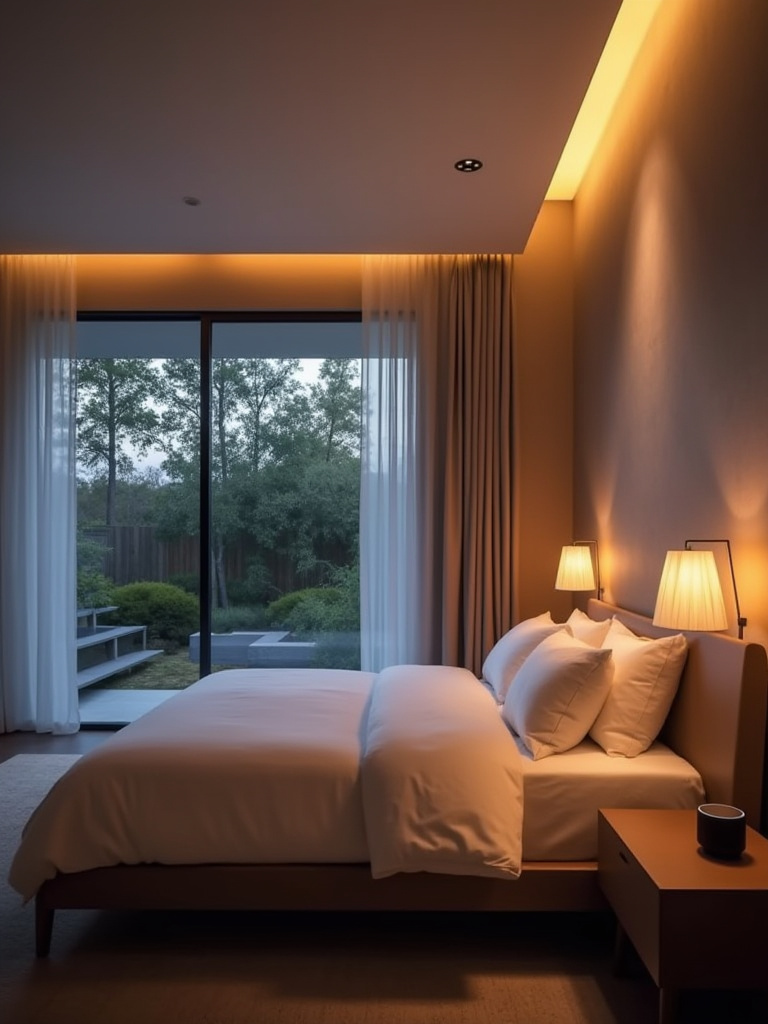
Imagine saying “Hey Google, goodnight.” The lights dim to 5%, the smart blinds close, the thermostat drops to 67 degrees, and a white noise machine starts playing. You’ve just created the perfect sleep environment without getting out of bed or fumbling with five different switches and apps. Or a “Wake Up” scene that gradually brightens the lights, raises the blinds, and starts your favorite morning podcast. This is technology working for you, seamlessly.
Elevating Your Space: Expert Styling, Textural Richness, and Personal Touches (Part 1)
The room is now functional, comfortable, and smart. It’s time to add the soul. These are the layers that make the space feel professionally styled and deeply personal. It’s the difference between a nice room and an unforgettable one.
13. Luxurious Layering: Elevating Bedding for Five-Star Comfort
Want to know the secret to that plush, “I want to dive in” hotel bed look? It’s layers. Lots of them. It’s about mixing textures to create visual and tactile depth. A bed with just a sheet and a comforter looks sad and flat.
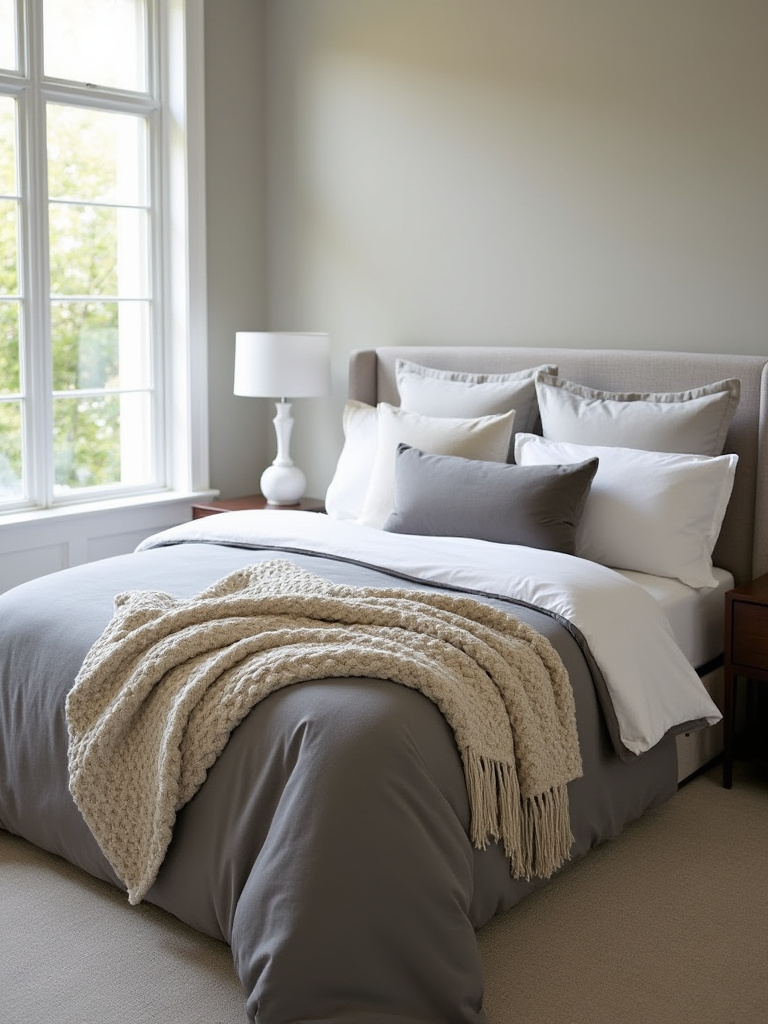
Here’s the simple formula: Start with great sheets. Add a duvet or quilt. Fold a different-textured blanket or throw across the bottom third of the bed. Prop up your sleeping pillows, then place two larger “Euro” shams behind them. Finish with one or two smaller decorative pillows in front. Mix your materials—crisp cotton, soft linen, chunky knit, plush velvet. This combination is what creates that irresistible, high-end feel.
Your bed now looks amazing. Let’s make sure the walls do, too.
14. Artwork & Mirror Placement: Adding Personality and Depth
Bare walls are a major buzzkill. But the common mistake is hanging a bunch of tiny, dinky frames that just look like clutter. My advice: go big. One large, impactful piece of art above the bed makes a much stronger statement than a gallery wall of tiny photos. It creates a clear focal point and feels confident.
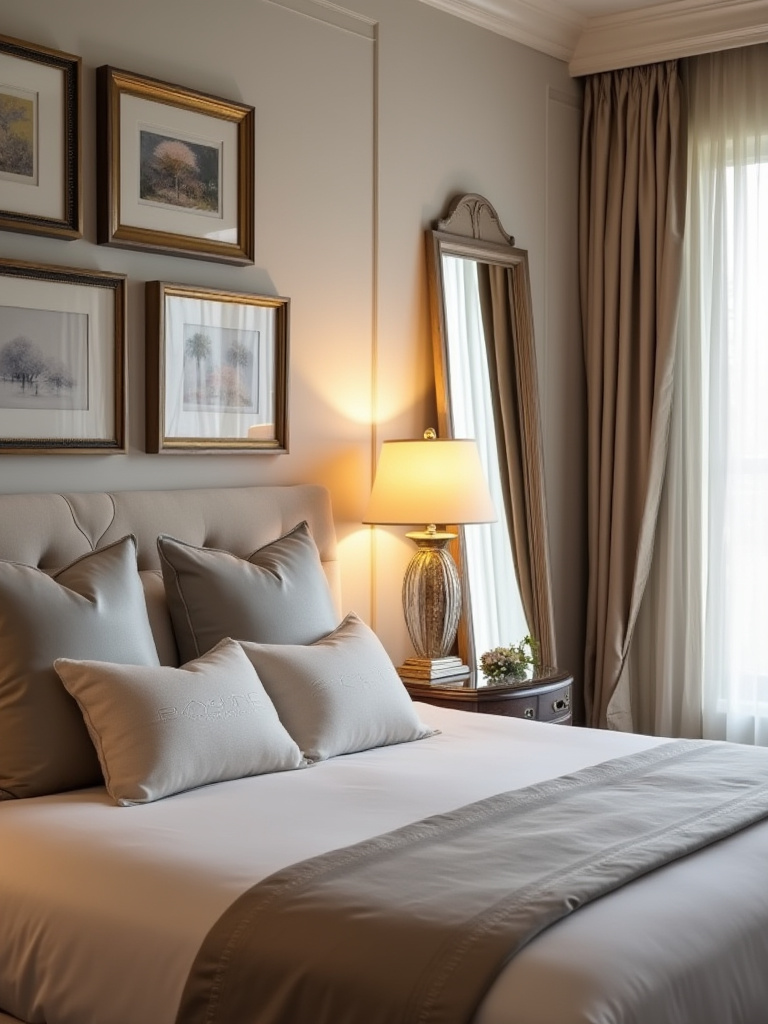
Mirrors are a secret weapon, especially in smaller rooms. A large floor mirror leaning against a wall will instantly make the space feel bigger and brighter. Just be strategic about what it reflects. You want it to bounce light from a window or reflect a beautiful piece of art, not the mess on top of your dresser.
Now let’s ground all these elements and tie the room together.
15. Rugs for Definition and Warmth: Anchoring Your Design Elements
We talked about rugs for comfort, but they also play a massive design role. A rug defines the sleeping zone and anchors your bed and nightstands, making them feel like a cohesive unit instead of a random collection of furniture floating in a room. It’s the visual foundation for the most important part of your bedroom.
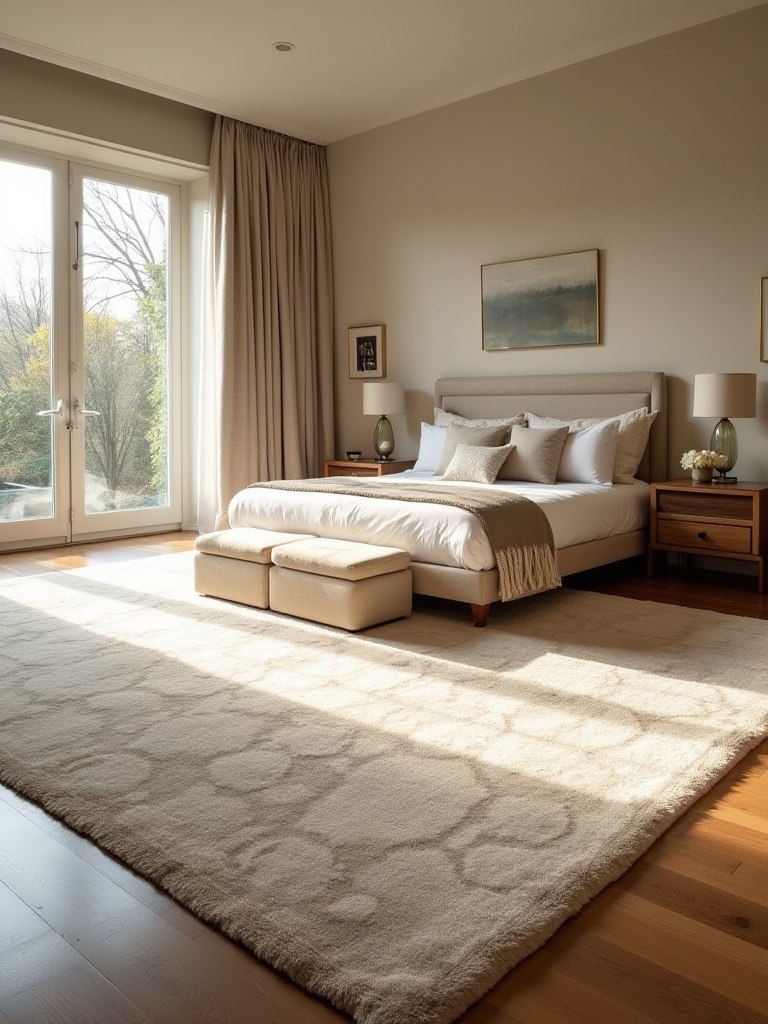
Again, size is everything. I can’t stress this enough. If you have a queen or king bed, you need at least an 8×10 rug, probably a 9×12. The front legs of your nightstands should be on the rug, and it should extend at least two feet beyond the foot of your bed. Yes, it’s a big investment, but a properly scaled rug is what separates an amateur-looking room from a professionally designed one.
Let’s add the final sensory layers that most people completely forget.
16. Scent and Soundscapes: Activating the Senses for Relaxation
A truly great space engages all the senses, not just your eyes. Creating a signature scent and soundscape for your bedroom is an incredibly powerful way to signal to your brain that it’s time to switch off and relax. It creates a distinct sensory bubble that separates your sanctuary from the rest of the world.
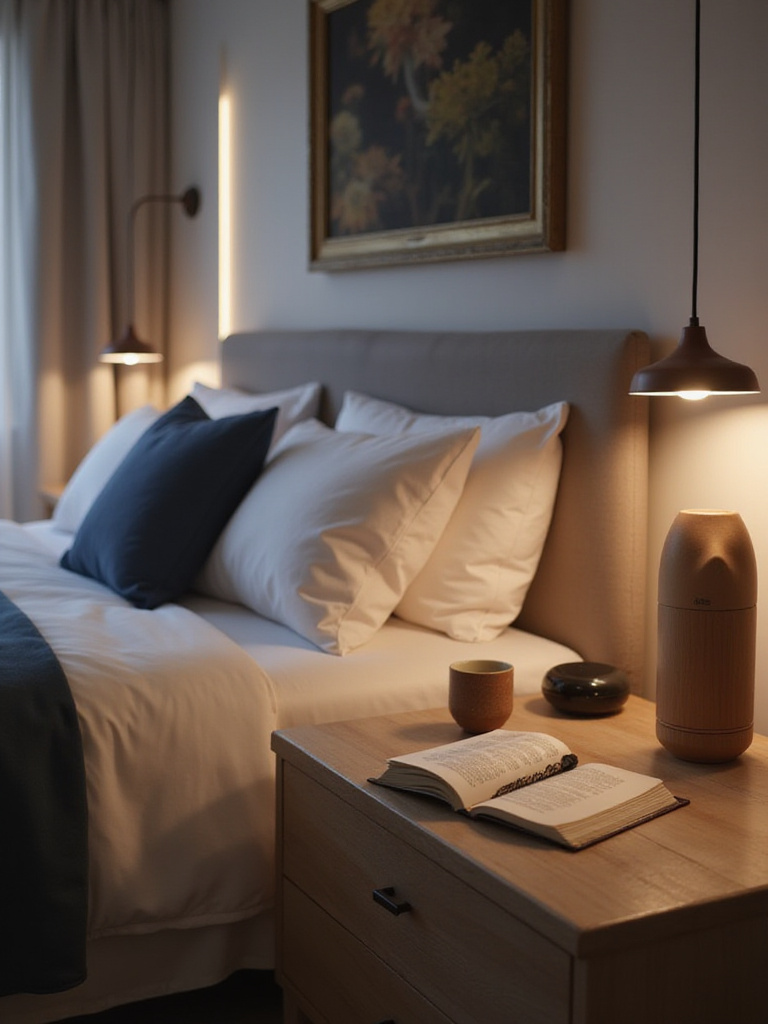
Forget those chemical-filled plugins. Get a high-quality essential oil diffuser and use calming scents like lavender, cedarwood, or bergamot for about an hour before bed. For sound, a good white noise machine is worth its weight in gold. It masks disruptive noises and provides a consistent, soothing backdrop for sleep. A smart speaker can also do the trick, playing everything from rain sounds to ambient music.
Elevating Your Space: Expert Styling, Textural Richness, and Personal Touches (Part 2)
We’re in the home stretch. We just need to add the final, unique touches that make the room undeniably yours. This is about injecting personality and a little bit of life into the space.
17. Curated Decor: Infusing Personality Through Accessories
This is a fancy way of saying: put things in your room that you actually love. Items that have a story. That photo from an amazing trip, a cool rock your kid found, a vase you bought from a local artist. The stuff that makes you smile. This is what transforms a house into a home.
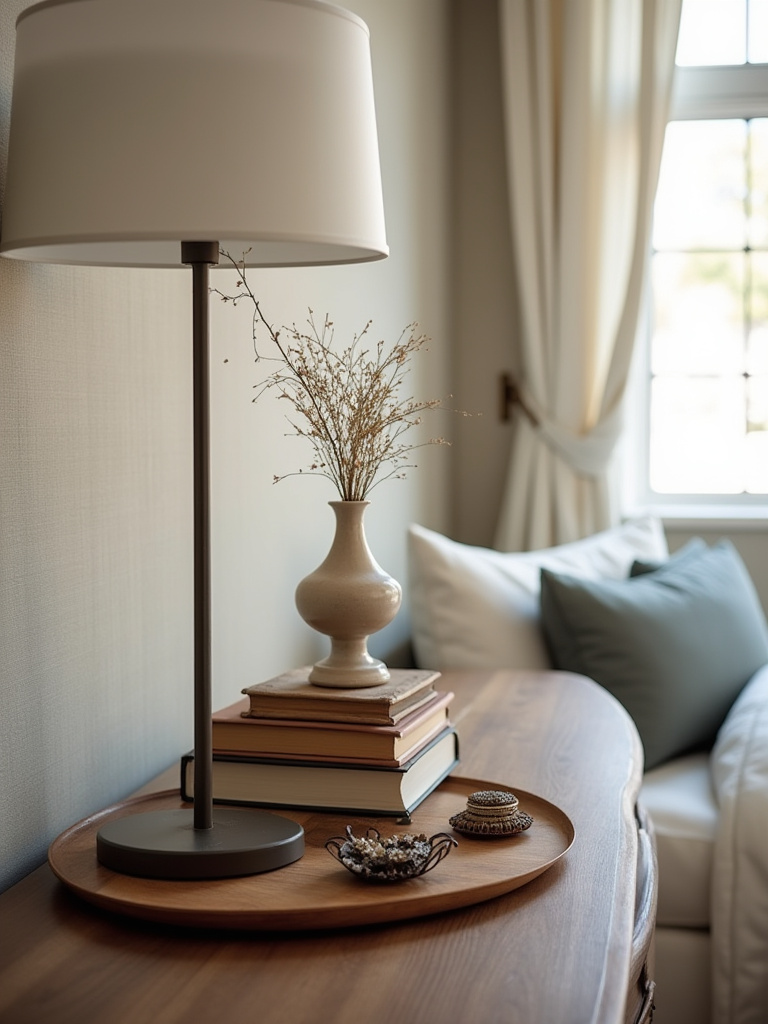
But here’s the pro tip: group these items together. Instead of scattering them around the room, create little “vignettes” on your dresser or nightstand. The “Rule of Three” is a classic for a reason—grouping items in odd numbers is just more visually appealing. A stack of three books, a small plant, and a framed photo looks intentional. The same items spread out just look like clutter.
Finally, let’s bring some of the outdoors in.
18. Biophilic Design Elements: Bringing Nature’s Calm Indoors
“Biophilic design” is a mouthful, but the concept is dead simple: humans are happier and calmer when they’re around nature. So, put a plant in your room. That’s it. It’s the easiest way to make a space feel more vibrant, peaceful, and alive.
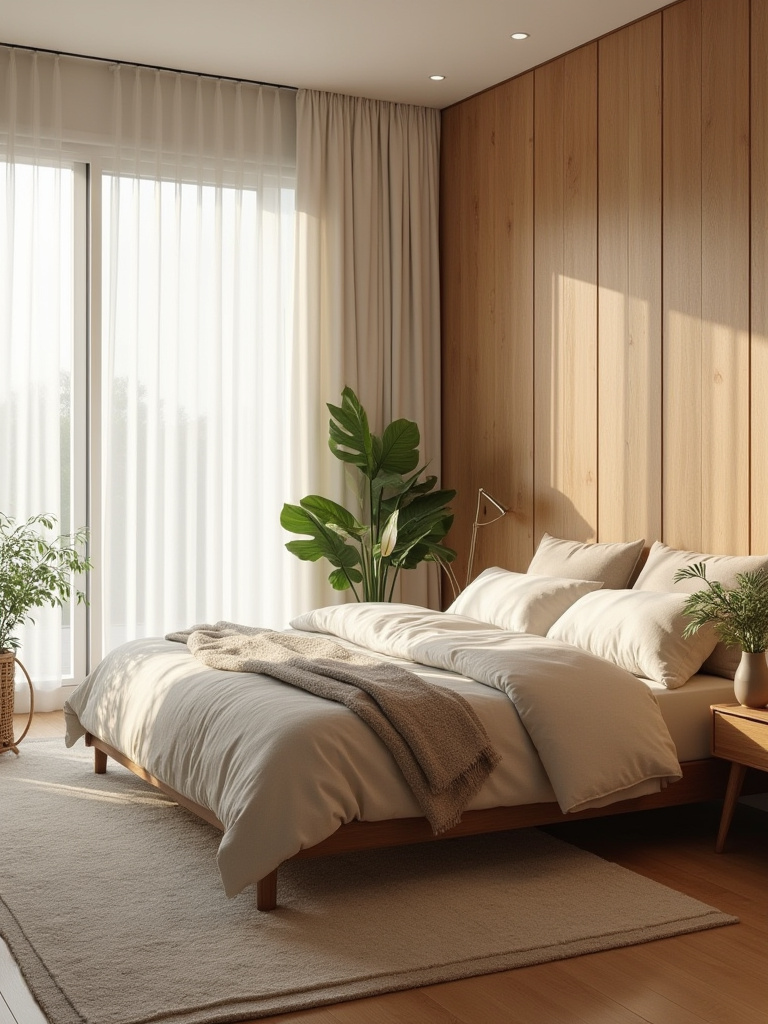
You don’t need a green thumb. Get a snake plant or a ZZ plant. They thrive on neglect and are basically indestructible. They also help purify the air while you sleep. Beyond plants, you can bring in nature with materials like a wood headboard, linen bedding, or a wool rug. These natural textures have a grounding, calming effect that you just can’t get from synthetic materials.
Sustaining Serenity: Advanced Techniques for Comfort and Longevity
Creating your sanctuary is one thing; keeping it that way is another. This isn’t a one-and-done project. Your needs and the seasons change, and your bedroom should adapt, too. These last few tips are about ensuring your space stays serene for the long haul.
19. Climate Control Innovation: Optimizing Temperature and Air Quality
We touched on the thermostat, but let’s take it a step further. Your body needs to drop its core temperature to initiate sleep, which is why a cool room (around 65°F / 18°C) is best. A smart thermostat is the MVP here, because it can automatically cool the room before you go to bed. Some models even have room sensors to ensure the bedroom is the perfect temperature, even if the rest of the house is warmer.
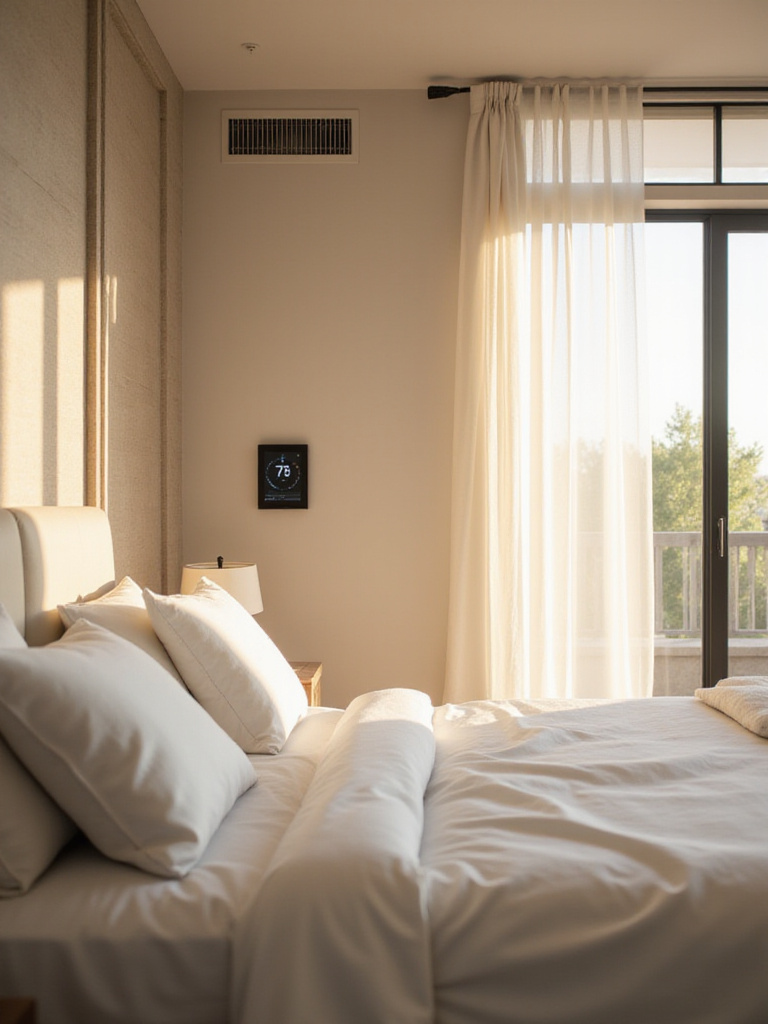
And don’t forget air quality. A good air purifier is a non-negotiable for me. It removes dust, allergens, and other gunk from the air, which can significantly reduce nighttime congestion and help you breathe easier. Clean, cool air is a cornerstone of great sleep.
This next one is a bigger investment, but the payoff in function and style is huge.
20. Bespoke Millwork & Built-ins: Customizing for Unique Needs
If you have a weird architectural nook, an awkward corner, or just need to maximize every square inch of a small room, custom built-ins are the ultimate solution. Off-the-shelf furniture is made for generic boxes; built-ins are tailor-made for your space.
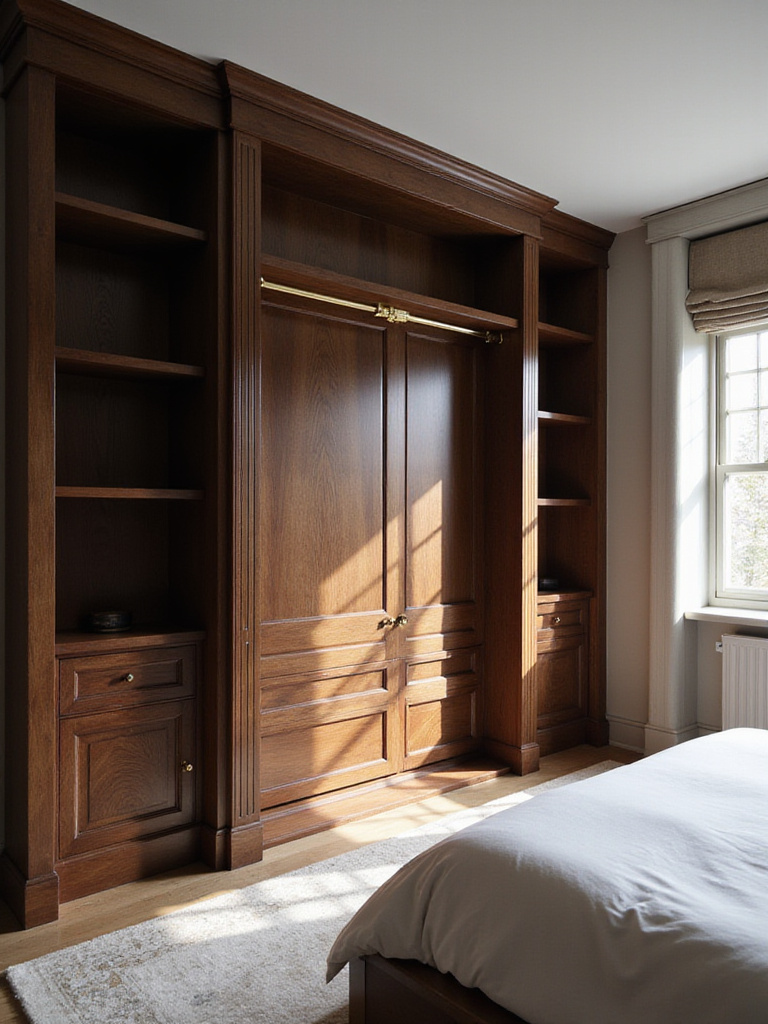
A custom floor-to-ceiling wardrobe can provide twice the storage of a standalone dresser while looking sleek and integrated. A built-in window seat can create a cozy reading nook with hidden storage underneath. It’s definitely a splurge, but for creating a highly functional and high-end feel, nothing beats custom millwork. It’s an investment in your home’s value and your daily sanity.
Now, let’s talk about the secret to keeping that “just finished” feeling.
21. Regular Refresh Cycles: Keeping Your Sanctuary Inviting and New
You wouldn’t go months without cleaning your kitchen, right? The same logic applies to your bedroom. A sanctuary can quickly devolve into a stressful mess without a little maintenance. Schedule a “sanctuary reset” once a season. It doesn’t have to be a huge ordeal.
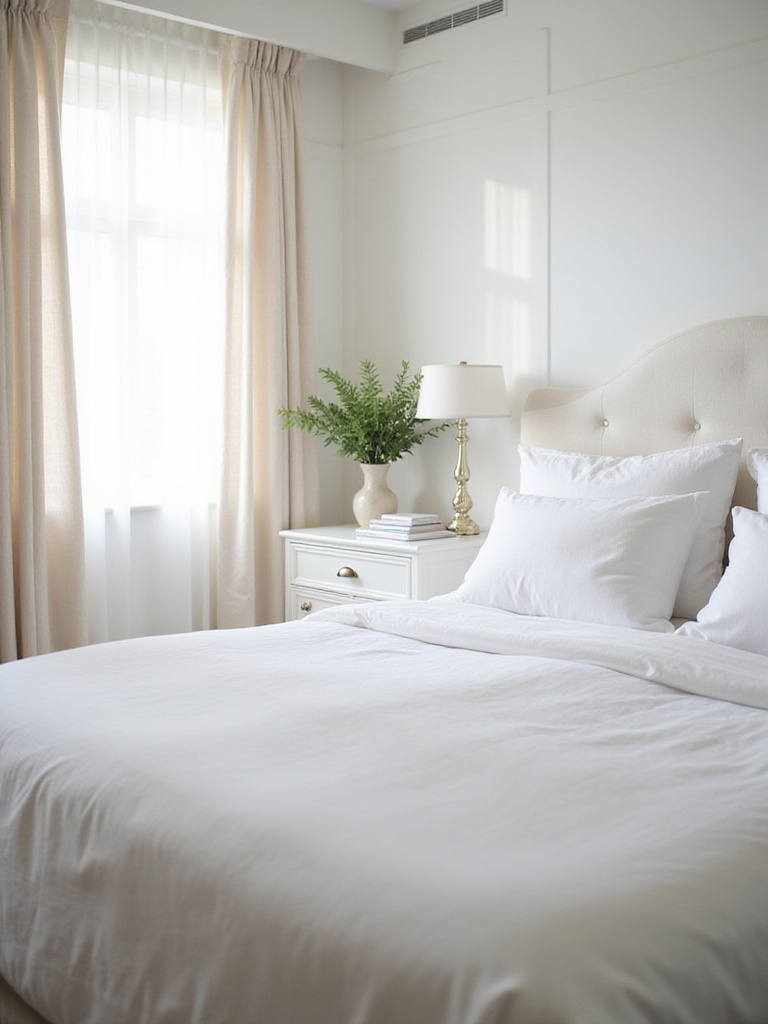
This just means a deep clean, washing the curtains and duvet cover, flipping the mattress, and decluttering any surfaces that have accumulated junk. Take 20 minutes to put away the stuff that’s migrated in. This regular refresh prevents that slow creep of chaos and ensures your bedroom always feels like a peaceful escape, not another item on your to-do list.
And finally, a simple trick to keep things from getting boring.
22. Seasonal Style Transitions: Adapting Your Space with the Year
You don’t wear a heavy wool coat in July, so why keep a thick velvet duvet on your bed? Adapting your bedroom to the seasons is a simple way to keep the space feeling fresh and aligned with the world outside. It also enhances your physical comfort.
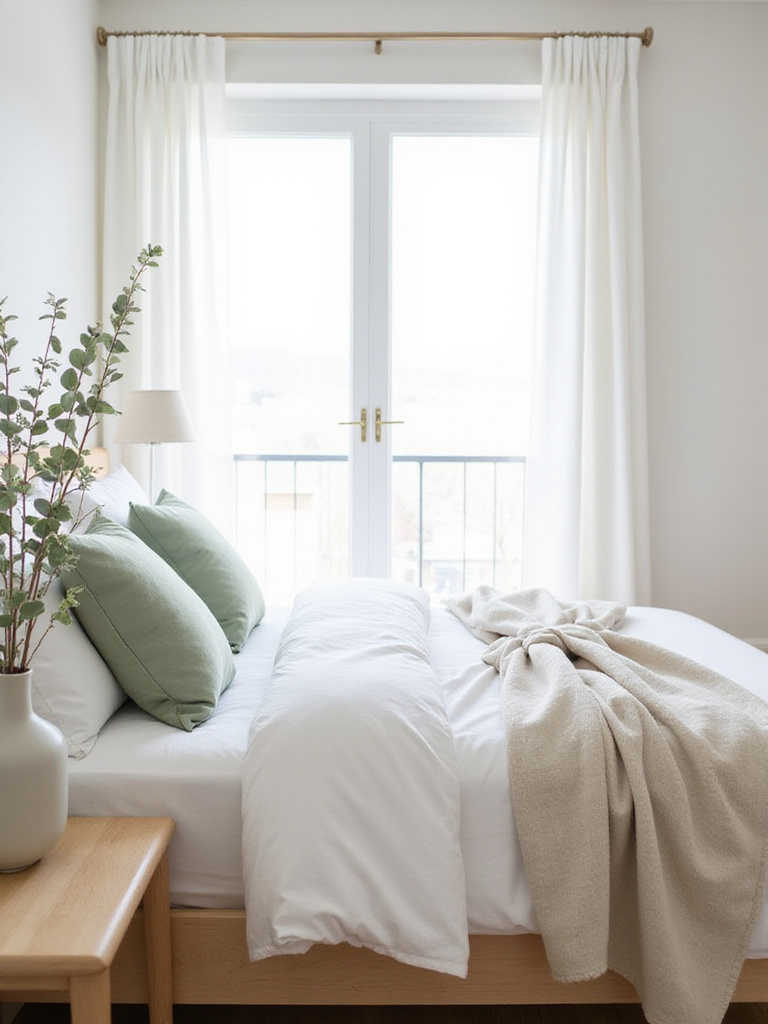
This is super easy. In the spring and summer, swap out the heavy textiles for lightweight linen or cotton bedding in lighter colors. Open the windows to let the breeze in. In the fall and winter, bring back the cozy layers: chunky knit throws, flannel sheets, and warmer, richer colors. A simple swap of pillow covers and a blanket is all it takes to completely transform the mood of the room.
Conclusion
So there you have it. This isn’t just about making your bedroom “pretty.” It’s about being intentional. It’s about designing a space that actively supports your well-being. By blending smart technology with timeless principles of comfort and personal style, you can create a sanctuary that serves as your personal launchpad—a place where you can truly rest, recharge, and get ready to connect with the world.
Don’t just let this be another article you read. Pick one thing. Just one. Maybe it’s finally buying blackout curtains, getting a dimmer switch installed, or just decluttering your nightstand. Start small. The goal isn’t a perfect room overnight; it’s to build a better space that gives you back more than you put into it. Your energy, your mood, and your relationships will thank you for it.
